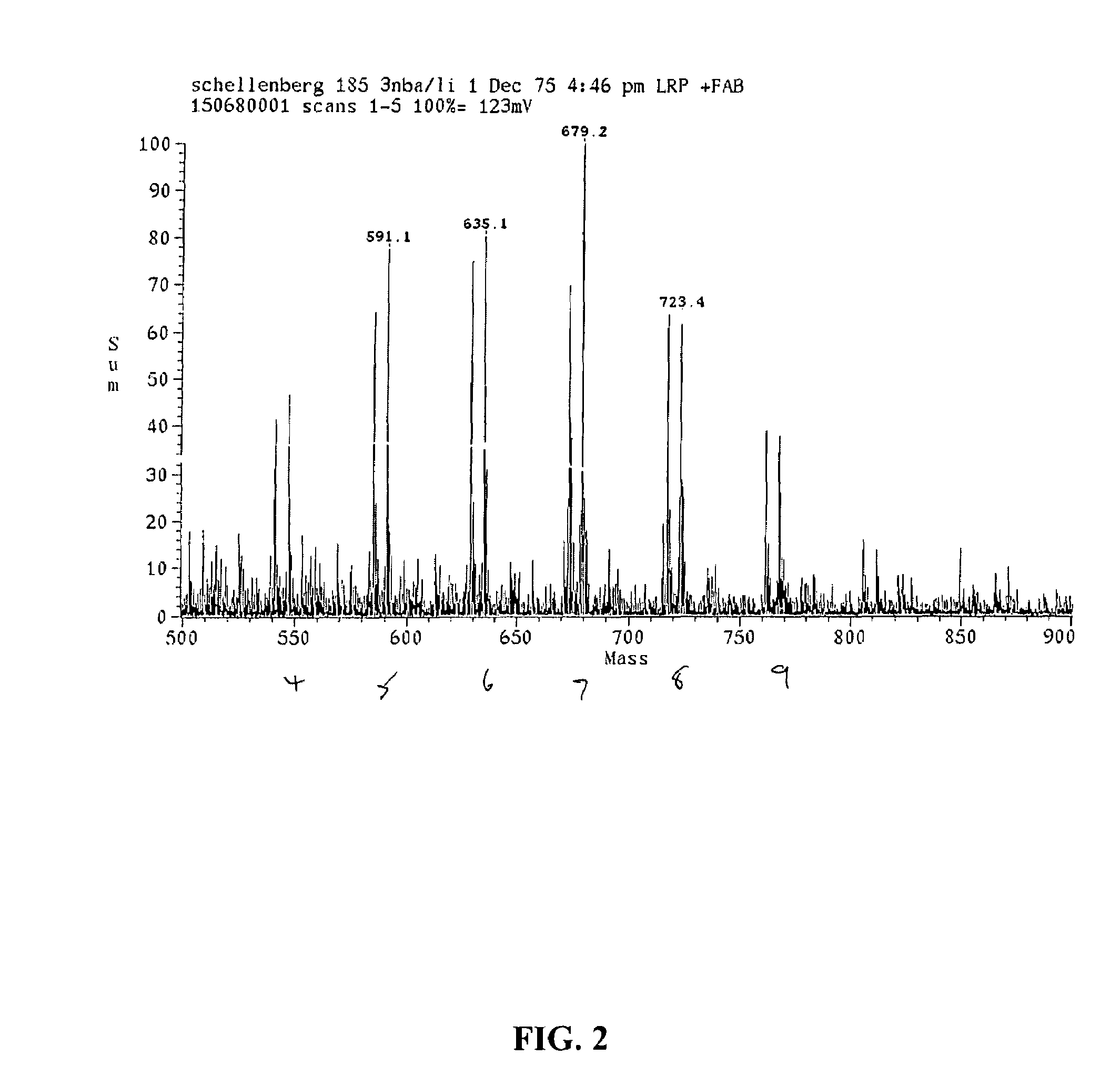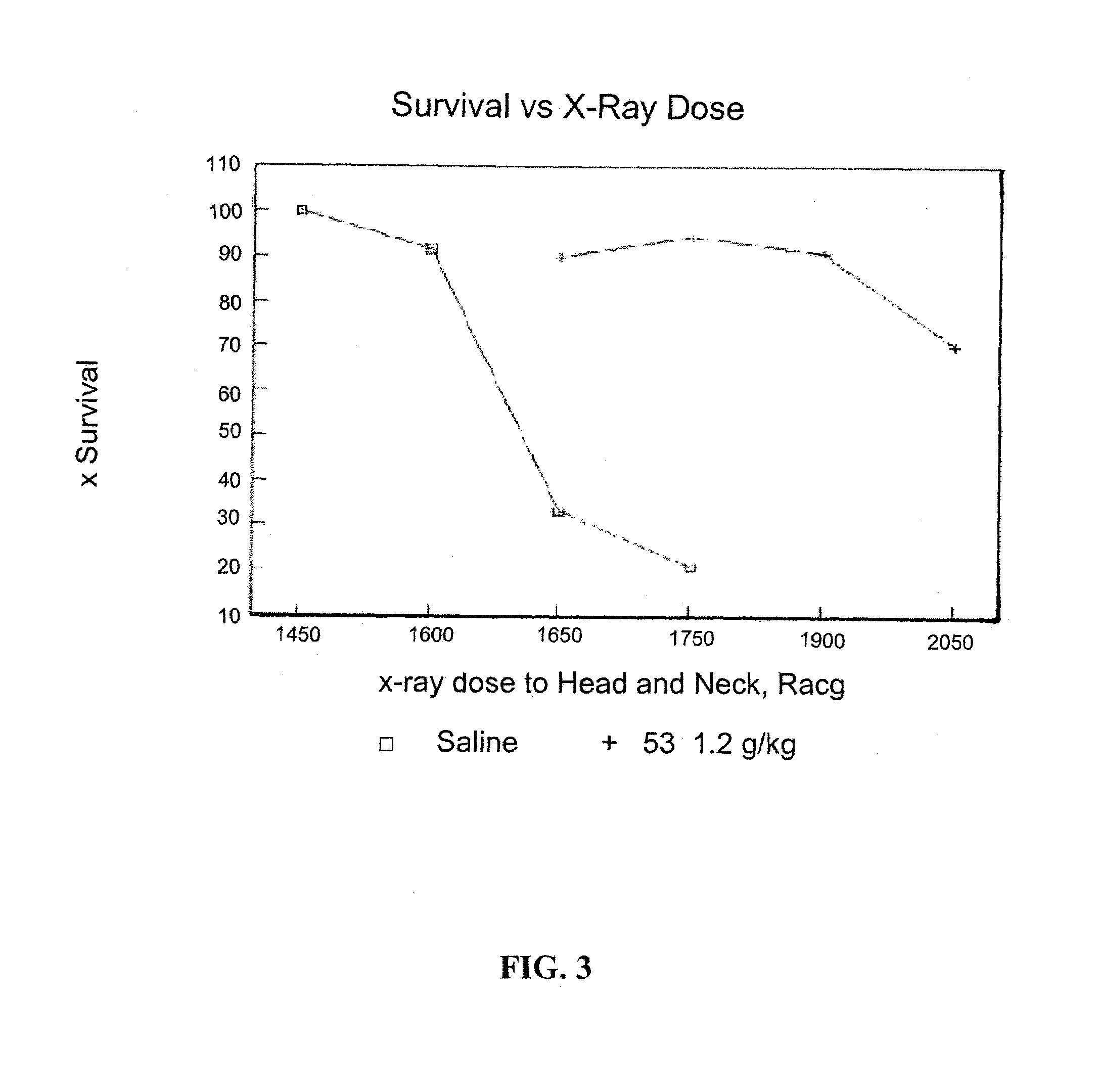Methoxypolyethylene glycol thioester chelate and uses thereof
a technology of methoxypolyethylene glycol and thioester, which is applied in the direction of antinoxious agents, drug compositions, prostheses, etc., can solve the problems of normal tissues, limited radiation dose which can be administered to tumors, and adverse effects of ionizing radiation on cells and tissues, etc., to reduce the elevated intraocular pressure
- Summary
- Abstract
- Description
- Claims
- Application Information
AI Technical Summary
Benefits of technology
Problems solved by technology
Method used
Image
Examples
example 1
Methyl Ester of Methoxypolyethlene Glycol Thiol with EDTA (MPSEDE)
[0117]MP was converted to the chloride by reaction with thionyl chloride (Bueckmann et al., Biotech. Appl. Biochem., 9: 258-268, 1987) thence to the thiol by reaction with thiourea (Urquhart et al Organic Syntheses Coll. Vol 3; Homing, E. C.; Ed.; Wiley, N.Y., 1955; pp 363-365) followed by treatment with base, acid, and purified by silica gel chromatography. The thiol was coupled to the EDTA as a thioester using carbonyldiimidazole as coupling agent with dimethylformamide solvent (Gais, Angew. Chem. Int. Ed. 16:244-246, 1977), followed by methyl esterification of the other carboxyl groups with methanol and carbonyldiimidazole. The products were purified by silica gel chromatography with elution by a gradient of ethyl acetate and heptane, and characterized by saponification and determination of chelate by copper chloride titration with pyridylazonaphthol indicator (Blijenberg et al, Clin. Chim Acta 26:577-579, 1969), d...
example 2
Methyl Ester of Methoxypolyethlene Glycol Thiol with DTPA (MPSDTE)
[0118]MP was converted to MPthiol using the same process described in Example 1. The thiol was coupled to the DTPA as a thioester using carbonyldiimidazole as coupling agent with dimethylformamide solvent (Gais, Angew. Chem. Int. Ed. 16:244-246, 1977), followed by methyl esterification of the other carboxyl groups with methanol and carbonyldiimidazole. The products were purified by silica gel chromatography with elution by a gradient of ethyl acetate and heptane, and characterized by saponification and determination of chelate by copper chloride titration with pyridylazonaphthol indicator (Blijenberg et al, Clin. Chim Acta 26:577-579, 1969), determination of thiol by spectrophotometry with Ellman's reagent (Riddles et al Meth. Enzymol. 1983, 91, 49-60), and confirmation of the molecular structure by FAB mass spectrometry. All of the analyses were consistent with the structures shown.
Toxicity Studies
[0119]For all biolo...
PUM
| Property | Measurement | Unit |
|---|---|---|
| diameter | aaaaa | aaaaa |
| diameter | aaaaa | aaaaa |
| diameter | aaaaa | aaaaa |
Abstract
Description
Claims
Application Information
 Login to View More
Login to View More - R&D
- Intellectual Property
- Life Sciences
- Materials
- Tech Scout
- Unparalleled Data Quality
- Higher Quality Content
- 60% Fewer Hallucinations
Browse by: Latest US Patents, China's latest patents, Technical Efficacy Thesaurus, Application Domain, Technology Topic, Popular Technical Reports.
© 2025 PatSnap. All rights reserved.Legal|Privacy policy|Modern Slavery Act Transparency Statement|Sitemap|About US| Contact US: help@patsnap.com



